Abstract
Factors affecting the membrane filtration of food suspensions were studied for 58 foods and 13 membrane filters. Lot number within a brand, pore size (0.45 or 0.8 micrometer), and time elapsed before filtration had little effect on filterability. Brand of membrane filter, flow direction, pressure differential, age (microbiological quality) of the food, duration of the blending process, temperature, and concentration of food in the suspension had significant and often predictable effects. Preparation of suspensions by Stomacher (relative to rotary blender) addition of surfactant (particularly at elevated temperature) and prior incubation with proteases sometimes had dramatic effects of filterability. In contrast to popular opinion, foods can be membrane filtered in quantities pertinent to the maximums used in conventional plating procedures. Removal of growth inhibitors and food debris is possible by using membrane filters. Lowering of the limits of detection of microorganisms by concentration on membrane filters can be considered feasible for many foods. The data are particularly relevant to the use of hydrophobic grid-membrane filters (which are capable of enumerating up to 9 X 10(4) organisms per filter) in instrumented methods of food microbiological analysis.
Full text
PDF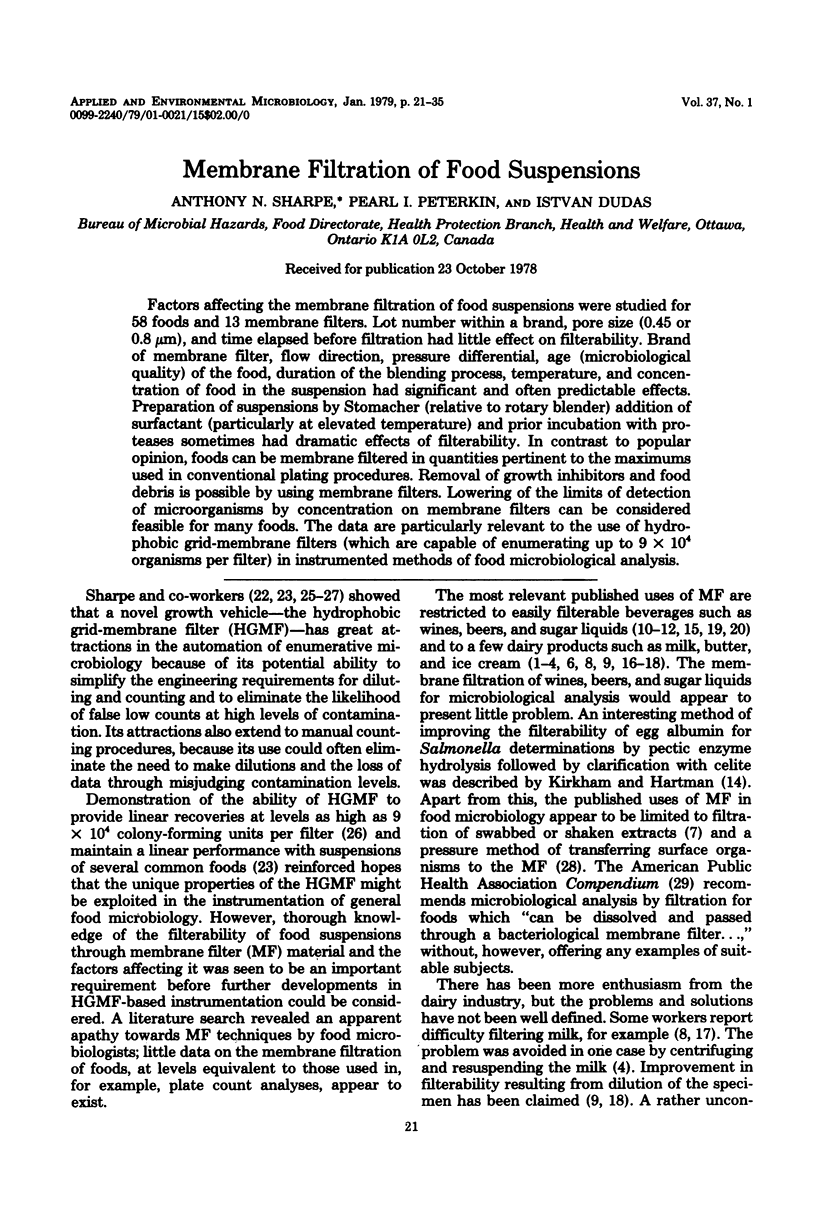
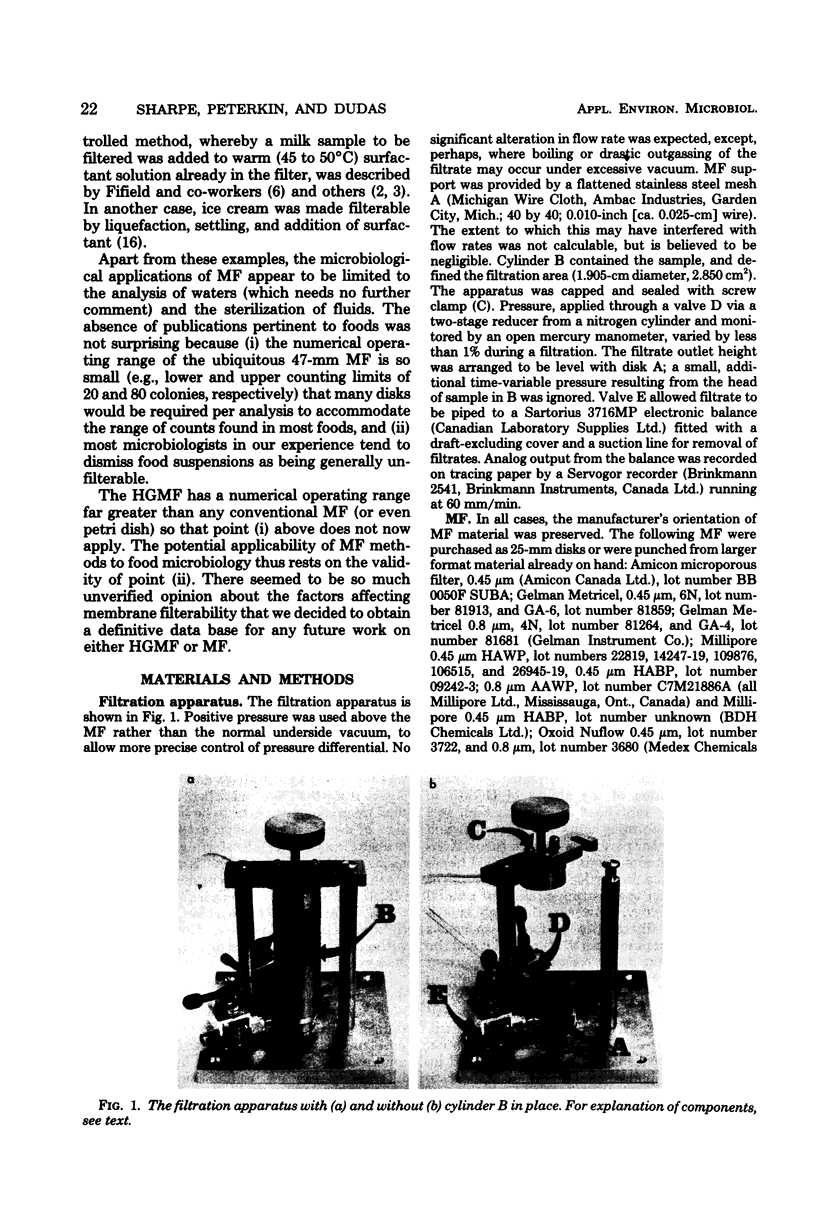
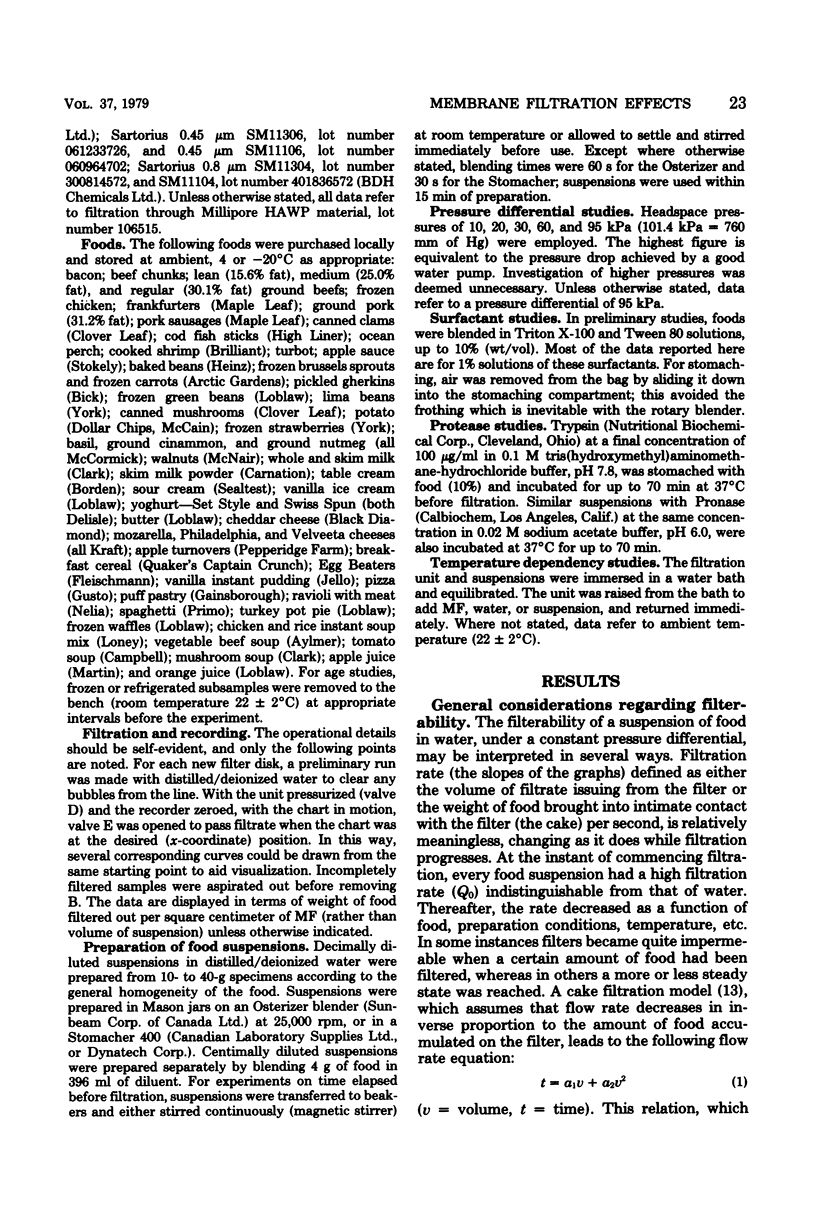
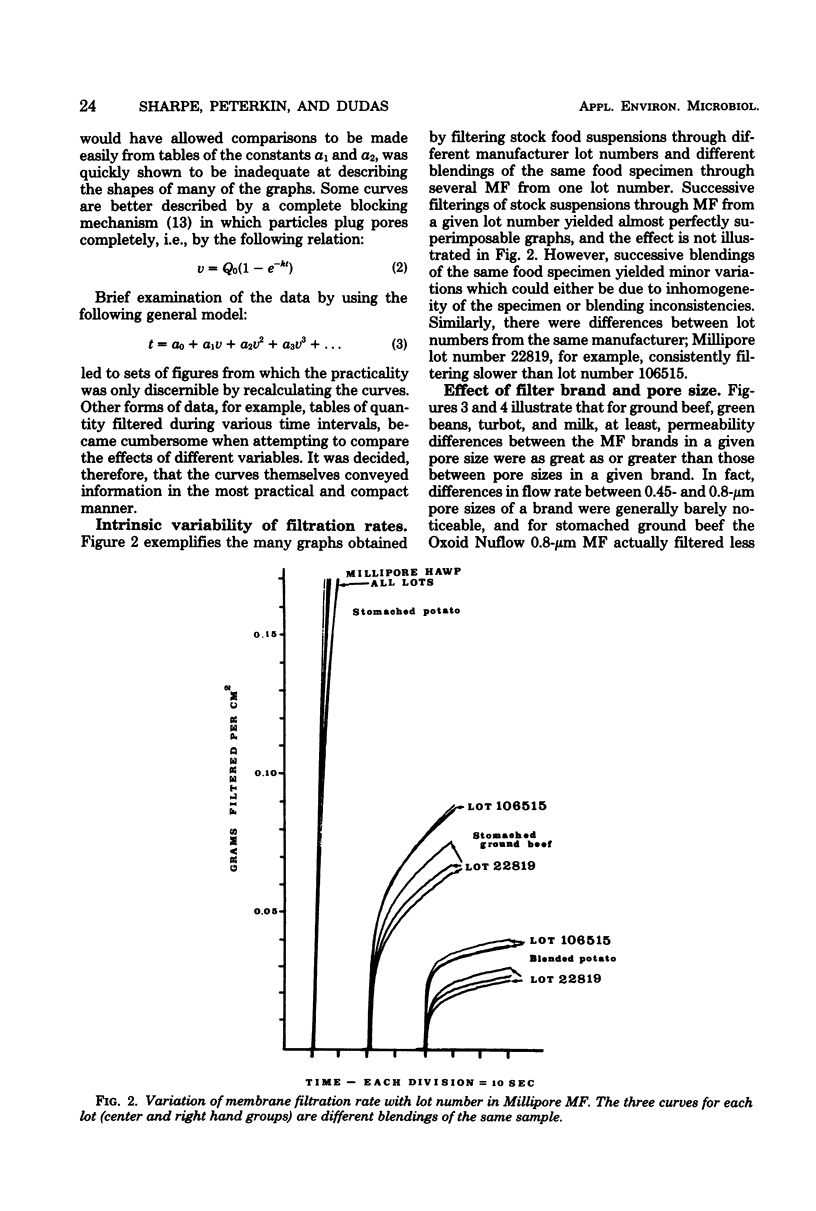
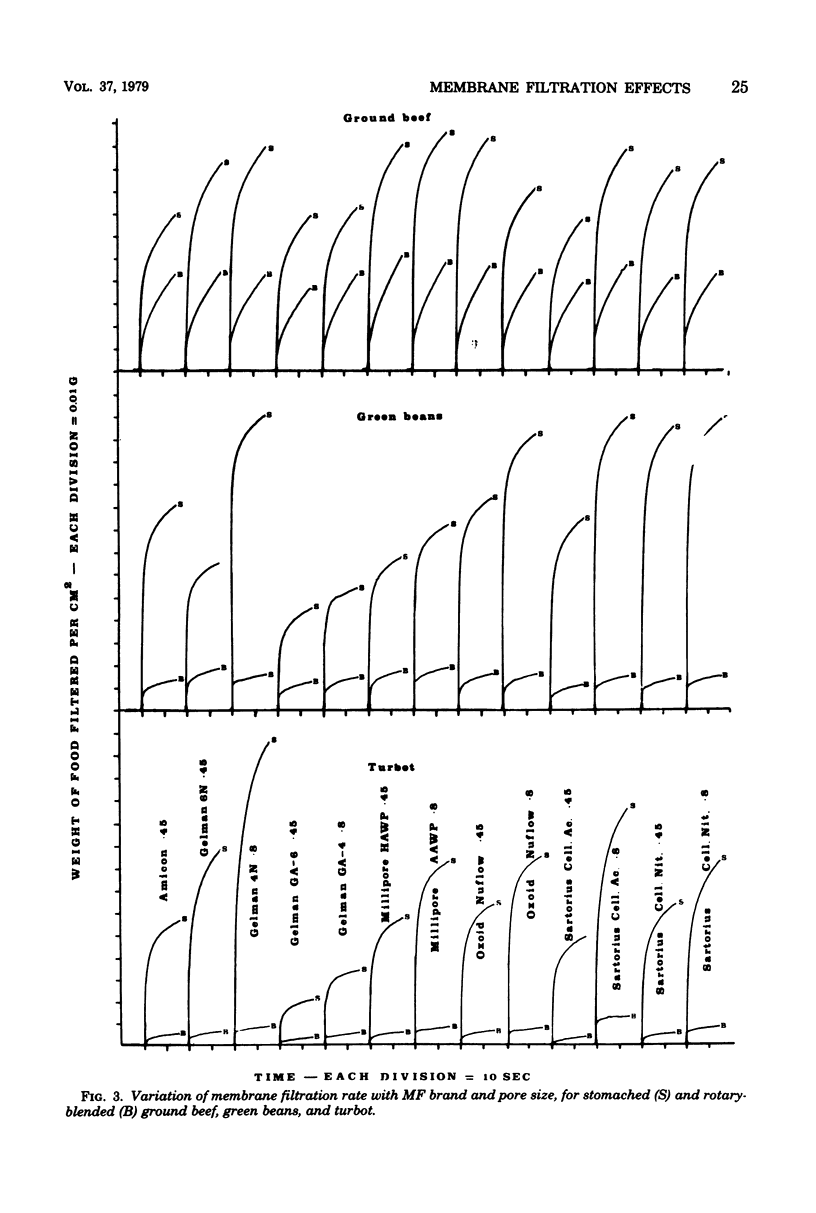
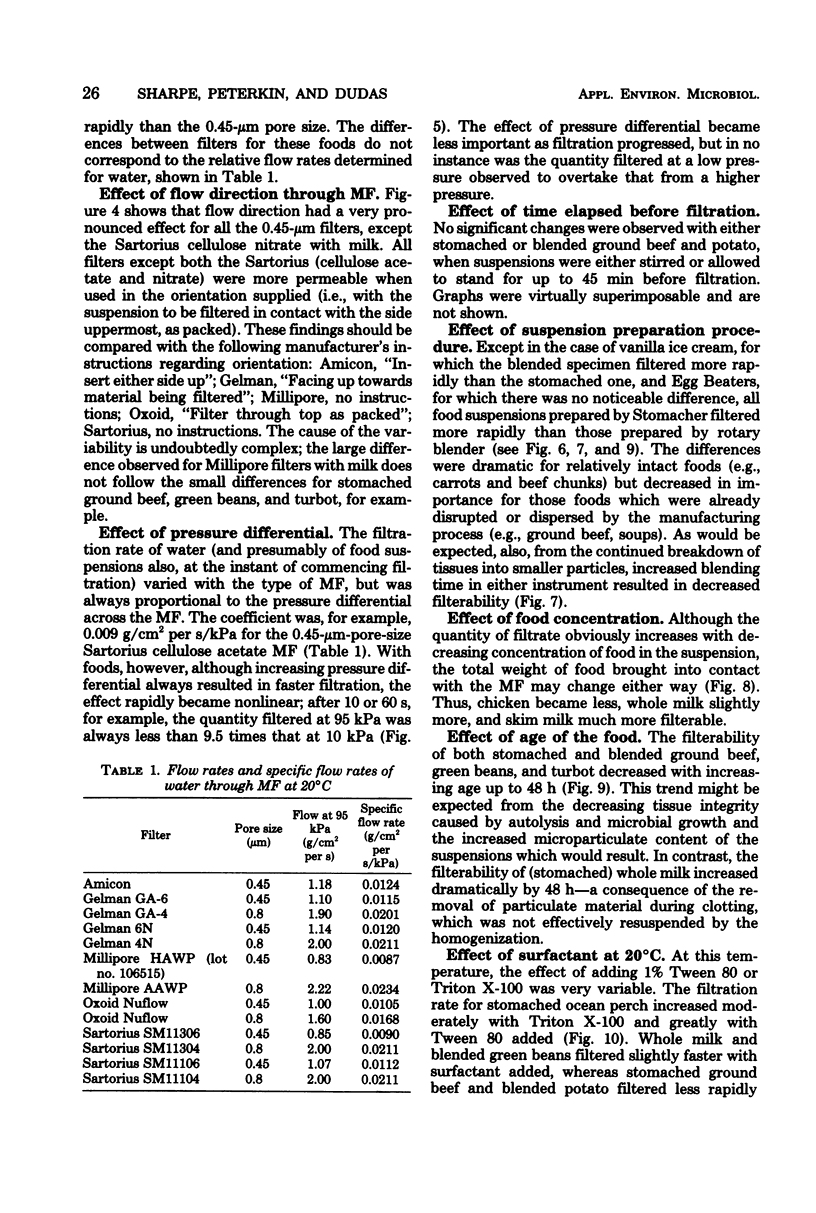

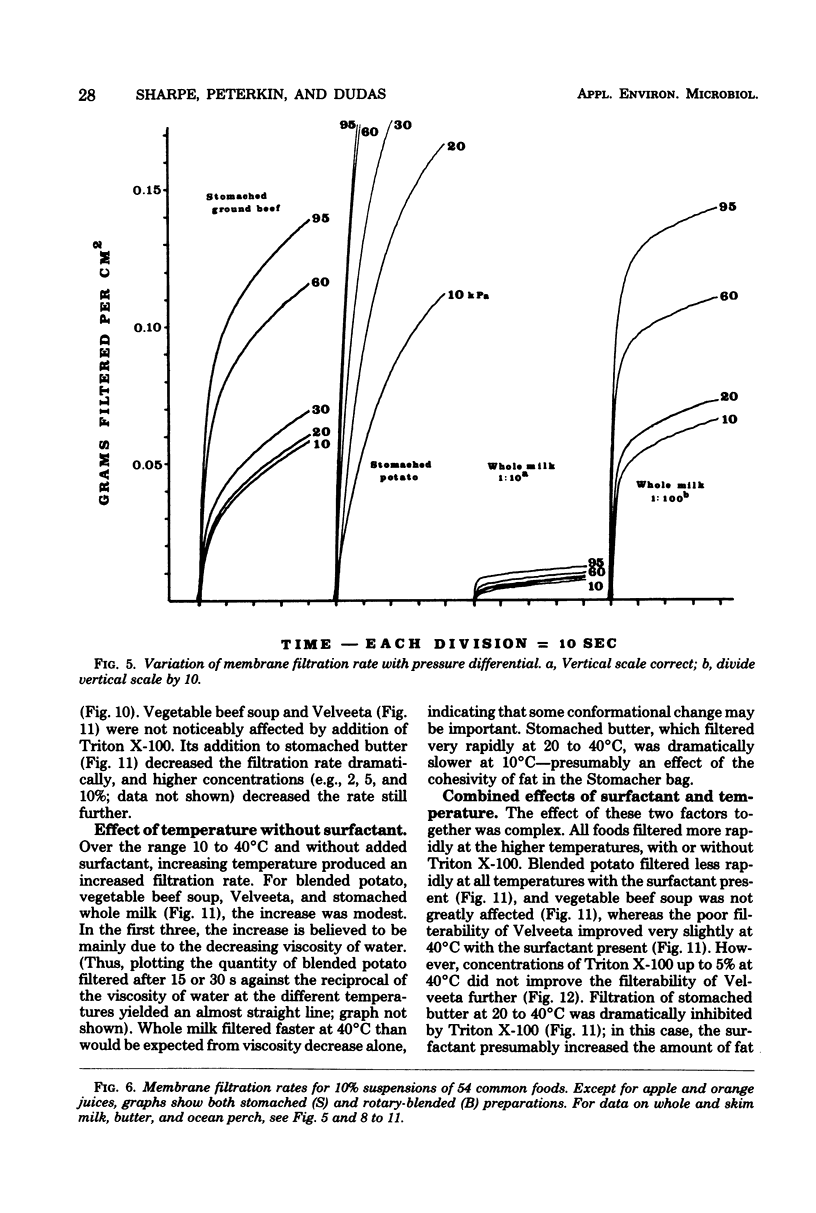
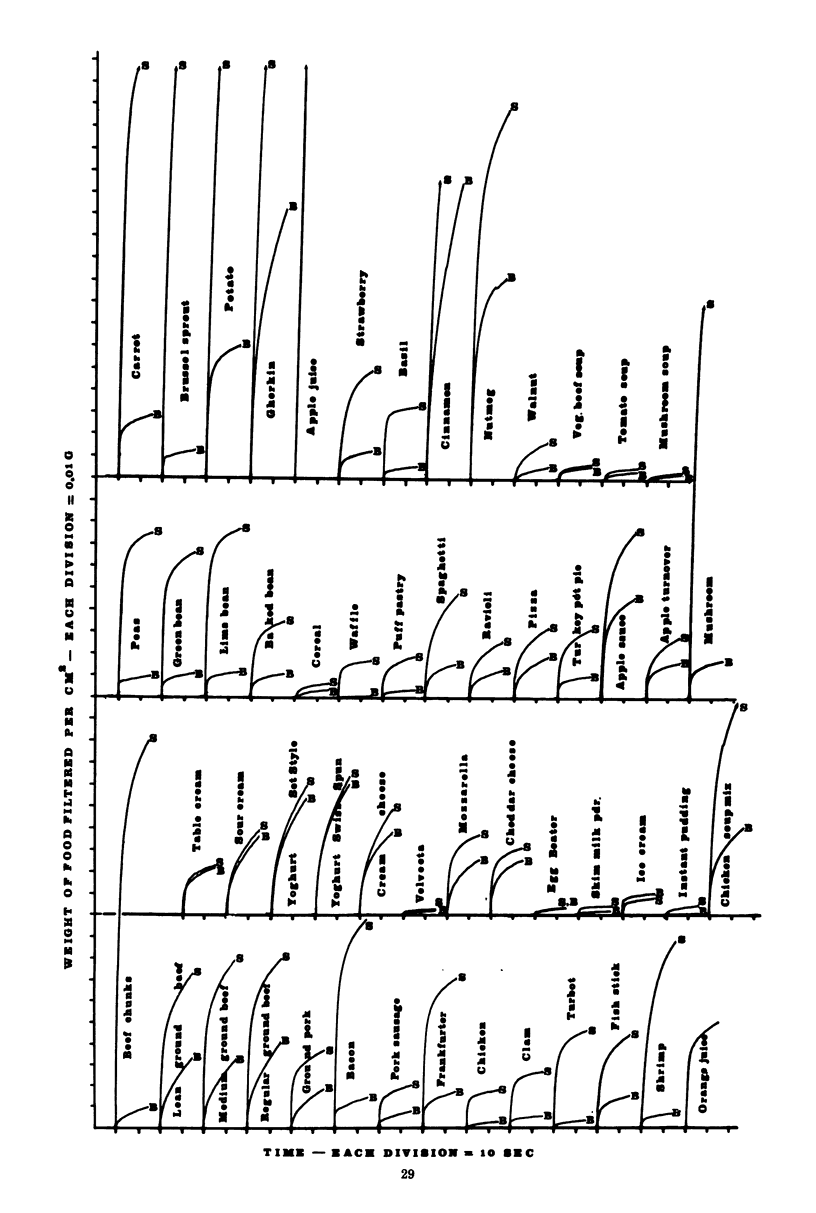

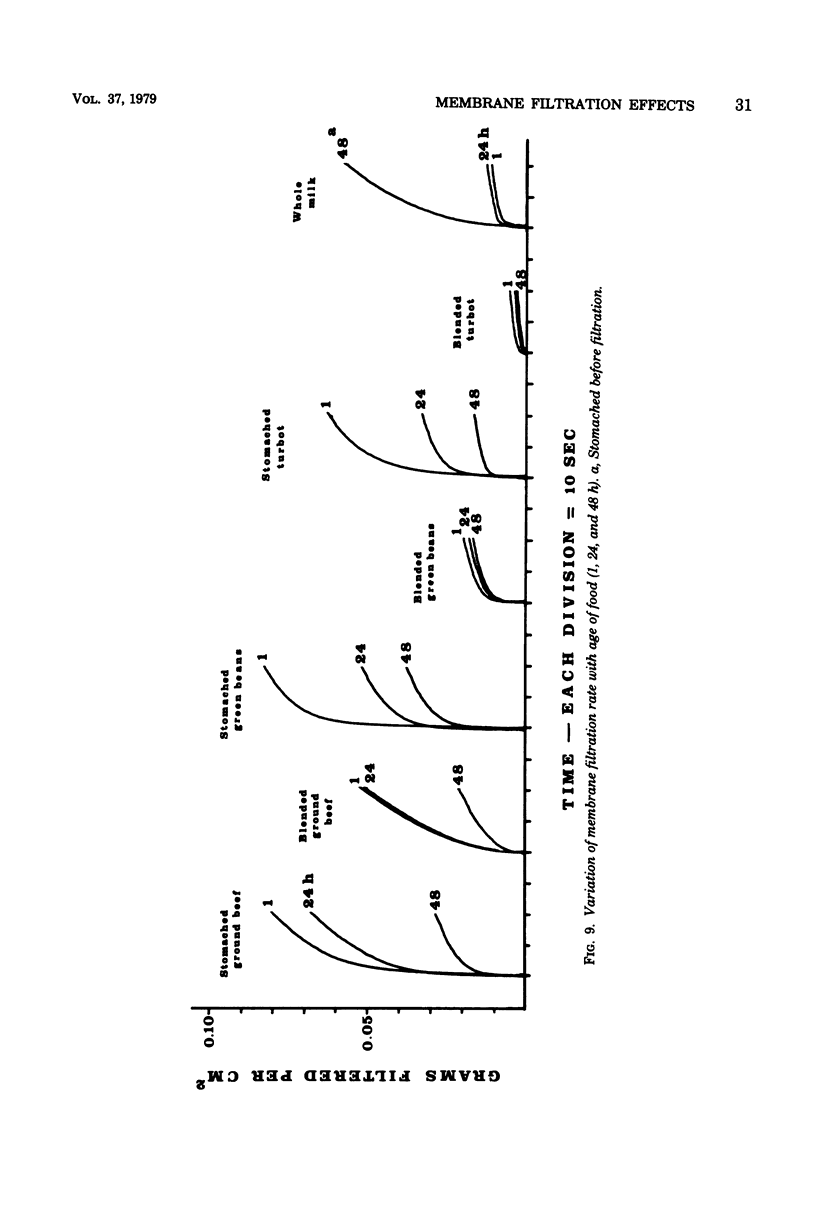
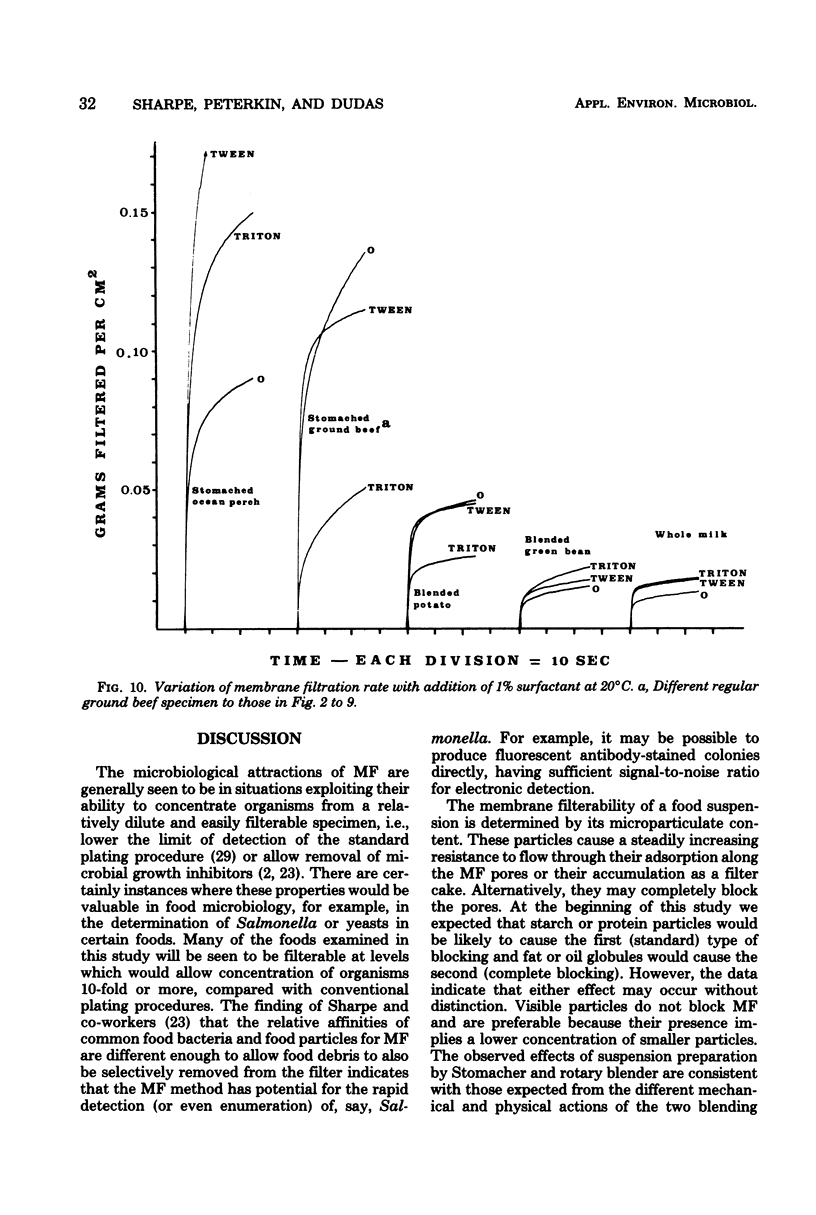

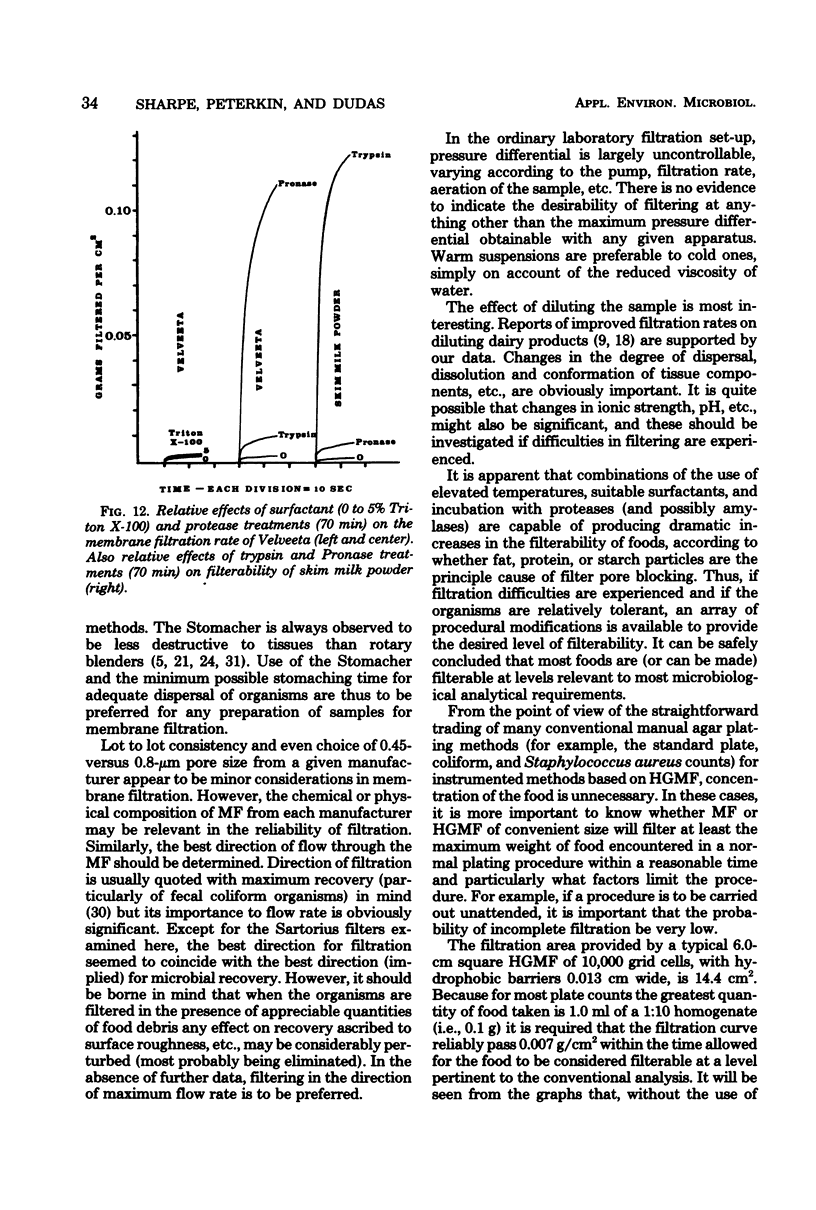
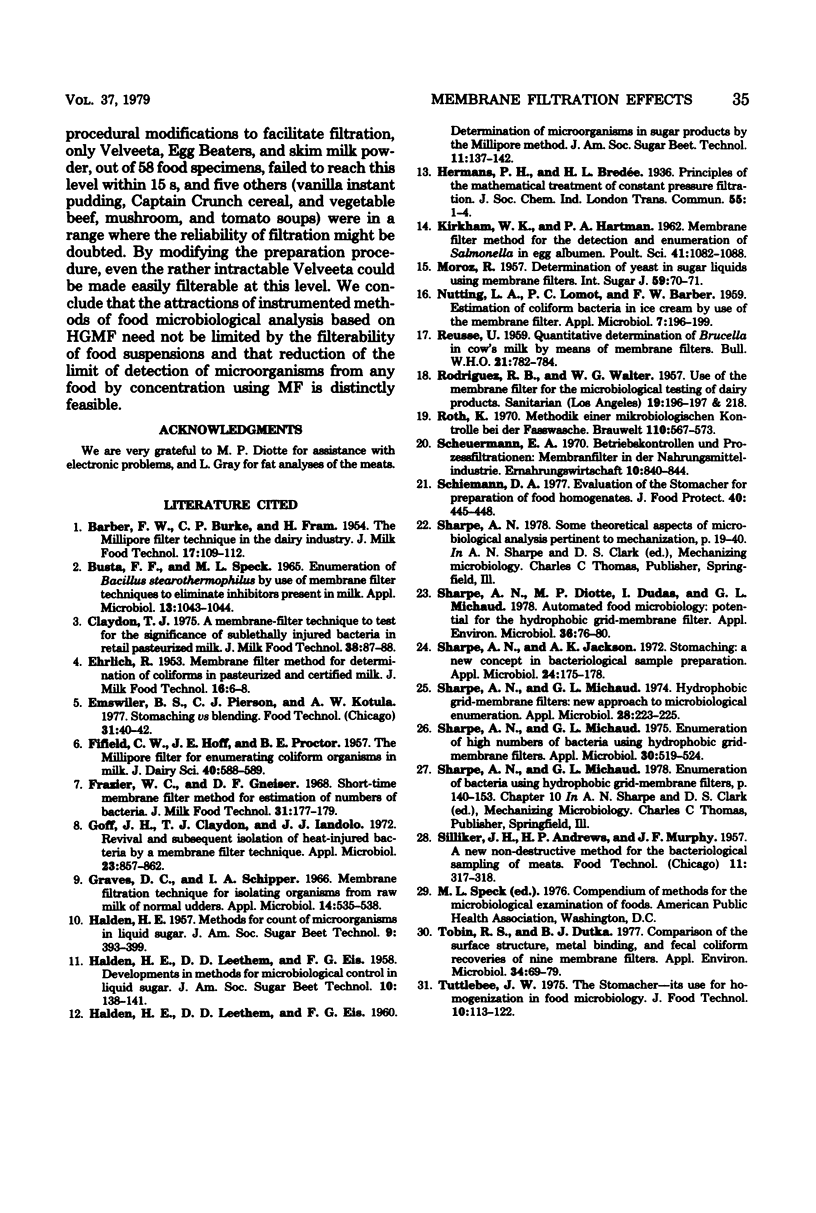
Images in this article
Selected References
These references are in PubMed. This may not be the complete list of references from this article.
- Busta F. F., Speck M. L. Enumeration of Bacillus stearothermophilus by use of membrane filter techniques to eliminate inhibitors present in milk. Appl Microbiol. 1965 Nov;13(6):1043–1044. doi: 10.1128/am.13.6.1043-1044.1965. [DOI] [PMC free article] [PubMed] [Google Scholar]
- Goff J. H., Claydon T. J., Iandolo J. J. Revival and subsequent isolation of heat-injured bacteria by a membrane filter technique. Appl Microbiol. 1972 May;23(5):857–862. doi: 10.1128/am.23.5.857-862.1972. [DOI] [PMC free article] [PubMed] [Google Scholar]
- Graves D. C., Schipper I. A. Membrane filtration technique for isolating organisms from raw milk of normal udders. Appl Microbiol. 1966 Jul;14(4):535–538. doi: 10.1128/am.14.4.535-538.1966. [DOI] [PMC free article] [PubMed] [Google Scholar]
- NUTTING L. A., LOMOT P. C., BARBER F. W. Estimation of coliform bacteria ice cream by use of the membrane filter. Appl Microbiol. 1959 Jul;7(4):196–199. doi: 10.1128/am.7.4.196-199.1959. [DOI] [PMC free article] [PubMed] [Google Scholar]
- Sharpe A. N., Diotte M. P., Dudas I., Michaud G. L. Automated food microbiology: potential for the hydrophobic grid-membrane filter. Appl Environ Microbiol. 1978 Jul;36(1):76–80. doi: 10.1128/aem.36.1.76-80.1978. [DOI] [PMC free article] [PubMed] [Google Scholar]
- Sharpe A. N., Jackson A. K. Stomaching: a new concept in bacteriological sample preparation. Appl Microbiol. 1972 Aug;24(2):175–178. doi: 10.1128/am.24.2.175-178.1972. [DOI] [PMC free article] [PubMed] [Google Scholar]
- Sharpe A. N., Michaud G. L. Enumeration of high numbers of bacteria using hydrophobic grid-membrane filters. Appl Microbiol. 1975 Oct;30(4):519–524. doi: 10.1128/am.30.4.519-524.1975. [DOI] [PMC free article] [PubMed] [Google Scholar]
- Sharpe A. N., Michaud G. L. Hydrophobic grid-membrane filters: new approach to microbiological enumeration. Appl Microbiol. 1974 Aug;28(2):223–225. doi: 10.1128/am.28.2.223-225.1974. [DOI] [PMC free article] [PubMed] [Google Scholar]
- Tobin R. S., Dutka B. J. Comparison of the surface structure, metal binding, and fecal coliform recoveries of nine membrane filters. Appl Environ Microbiol. 1977 Jul;34(1):69–79. doi: 10.1128/aem.34.1.69-79.1977. [DOI] [PMC free article] [PubMed] [Google Scholar]



